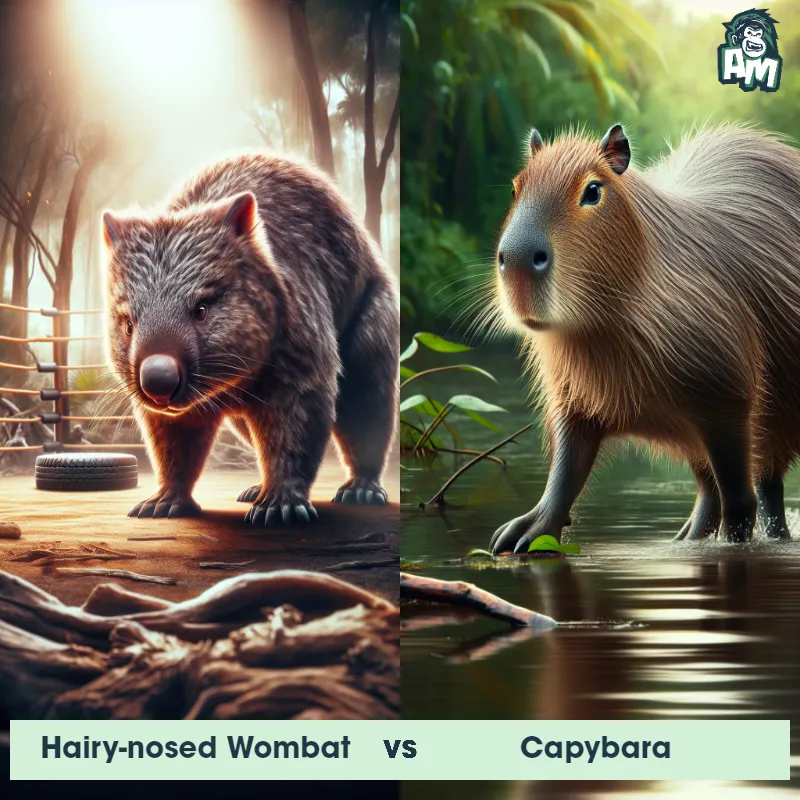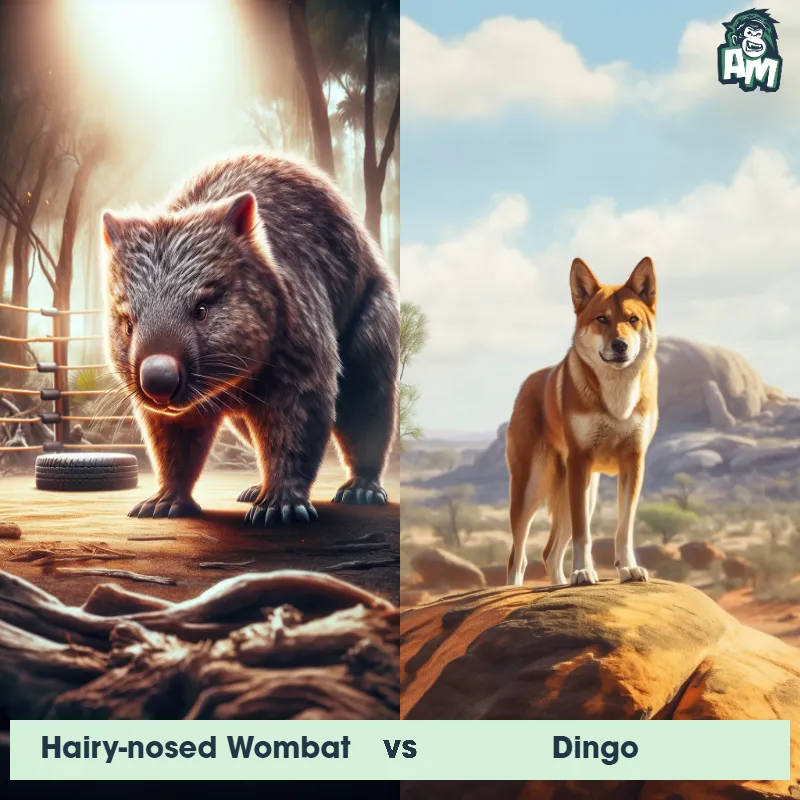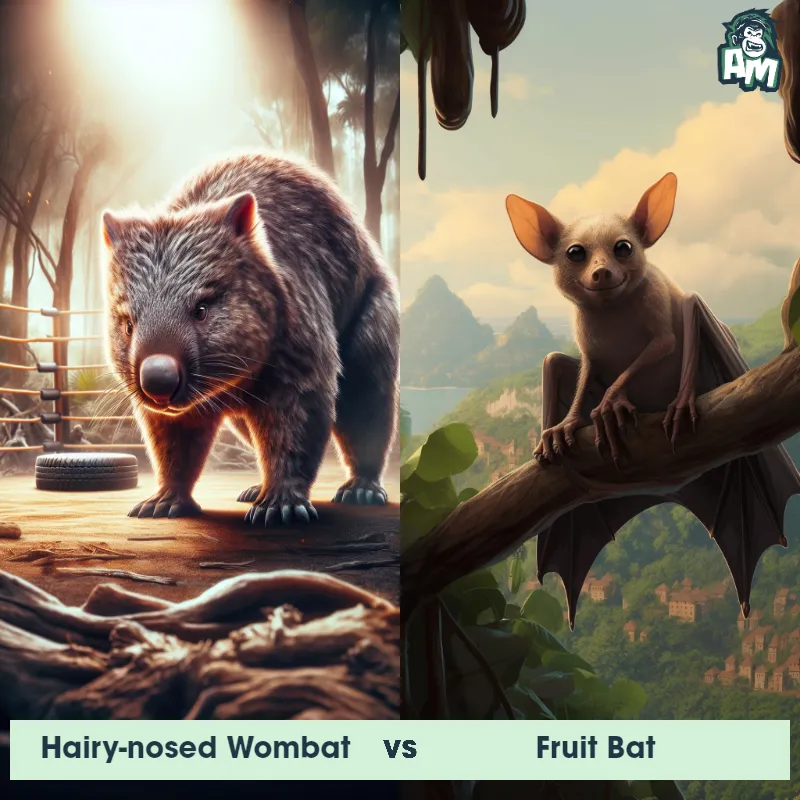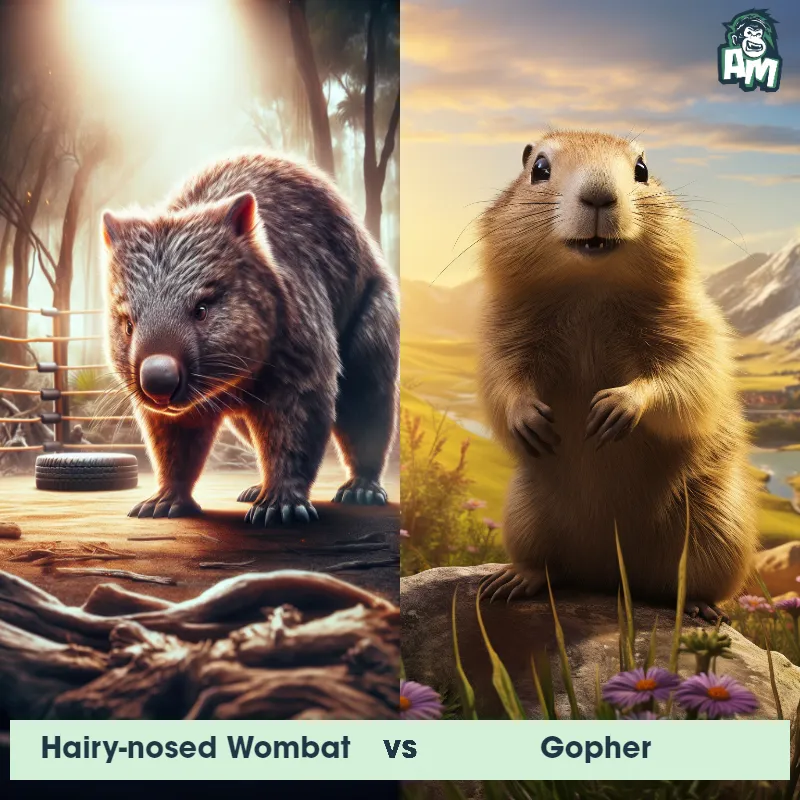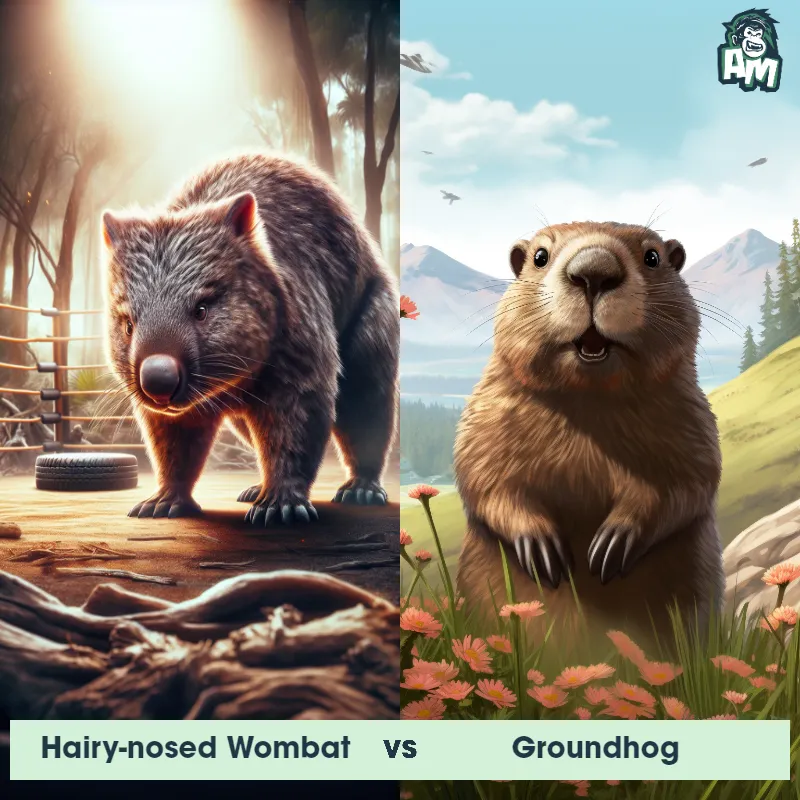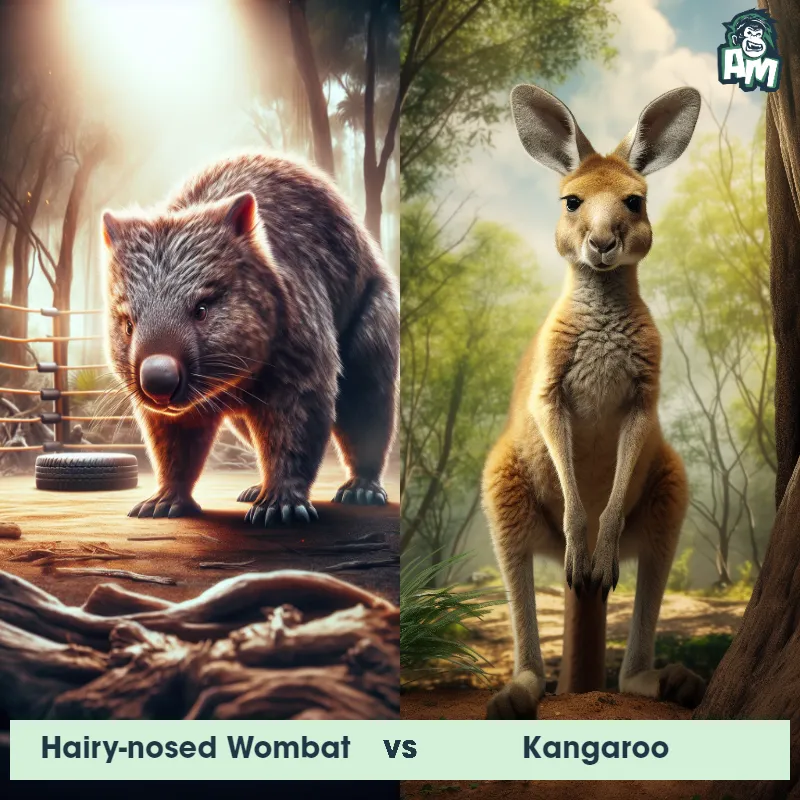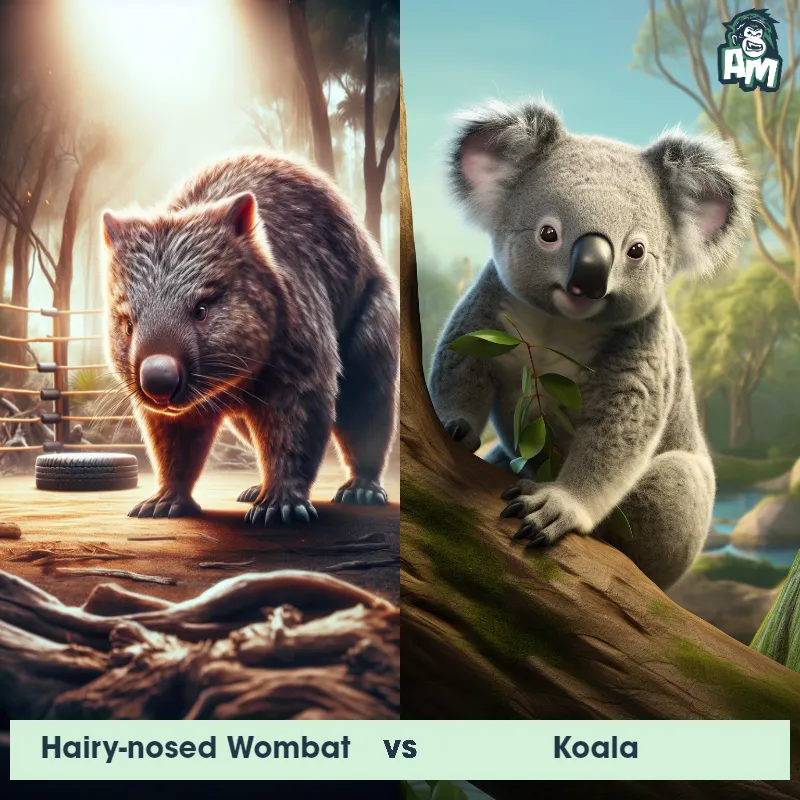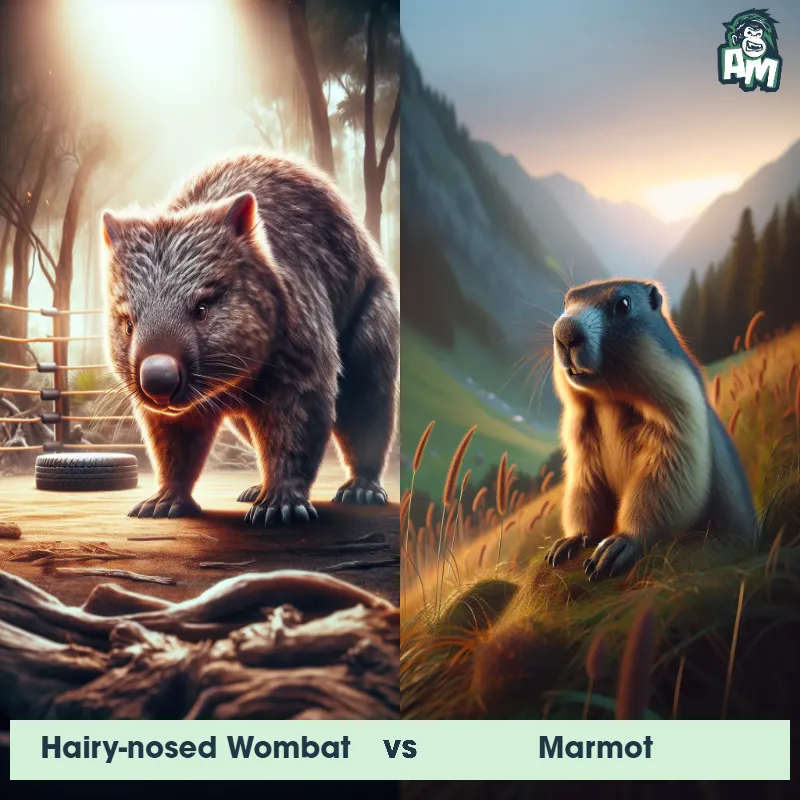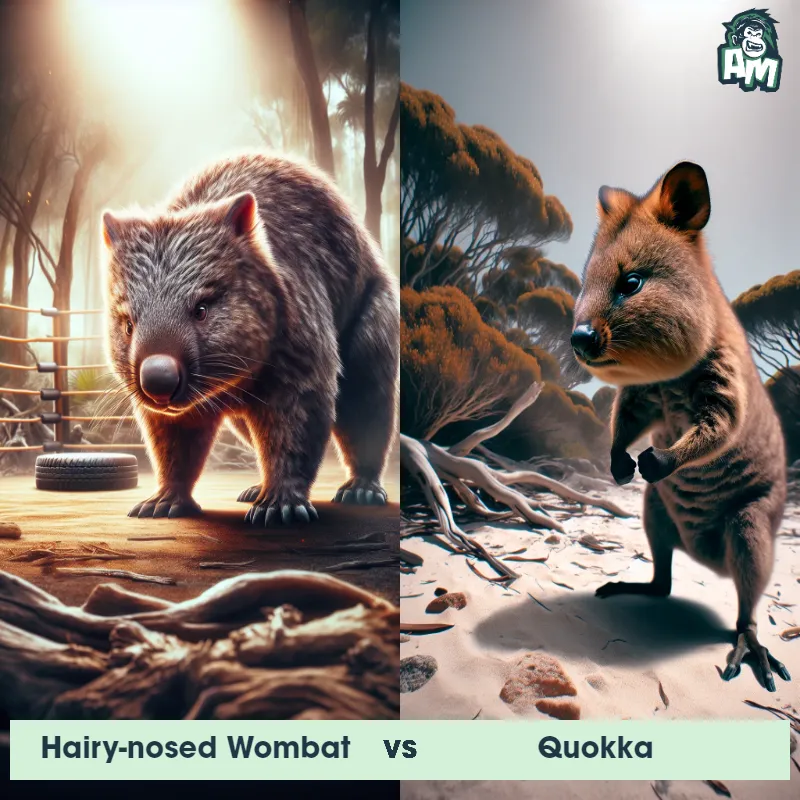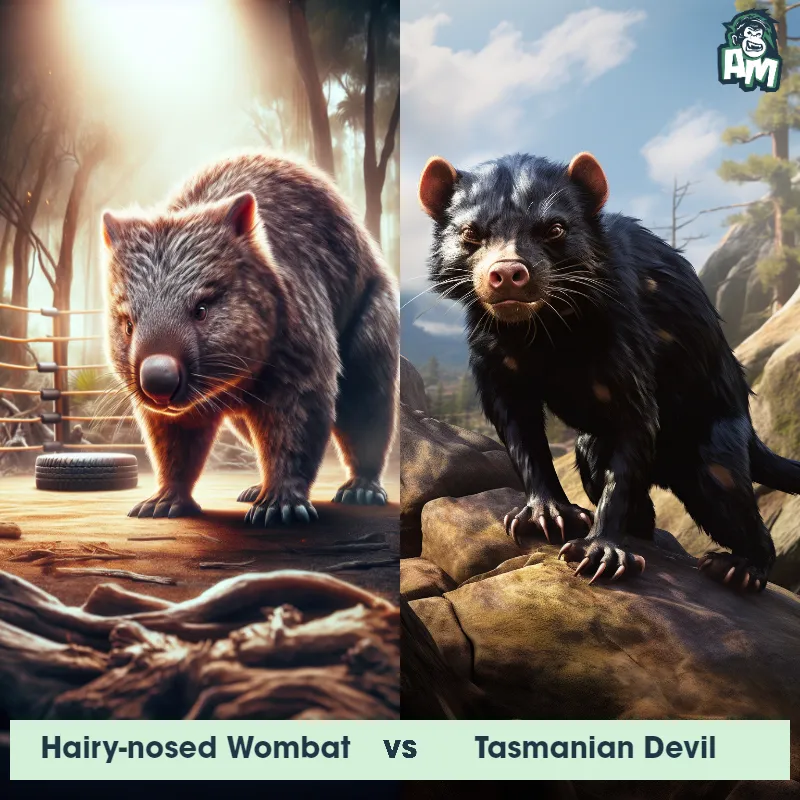The Hairy-Nosed Wombat
The Hairy-Nosed Wombat, also known as the Queensland Hairy-Nosed Wombat or Lasiorhinus krefftii, is a unique marsupial that can be found in a small region of northeastern Australia. Named after its prominent whiskers and prominent nose, this species is characterized by its stout and robust build, with a thick coat of grey-brown fur that protects it from the harsh Australian climate. The Hairy-Nosed Wombat has strong claws that it uses to dig extensive burrow systems, which can stretch up to tens of meters in length and provide protection and shelter. It primarily feeds on native grasses, roots, and herbs, and is known for its slow and steady movements.

| Hairy-Nosed Wombat | |
|---|---|
| Size | 35 inches (90 cm) |
| Weight | 55 pounds (25 kg) |
| Speed | 25 mph (40 km/h) |
| Key Strength | Powerful jaws |
| Biggest Weakness | Limited mobility/agility |
| Scientific Name | Lasiorhinus krefftii |
| Family | Vombatidae |
| Habitat | Grassland and eucalyptus forest |
| Geography | Australia |
| Diet | Herbivorous, mainly grasses and roots |
| Lifespan | 10 years - 15 years |

The Hairy-Nosed Wombat
The Hairy-Nosed Wombat, also known as the Queensland Hairy-Nosed Wombat or Lasiorhinus krefftii, is a unique marsupial that can be found in a small region of northeastern Australia. Named after its prominent whiskers and prominent nose, this species is characterized by its stout and robust build, with a thick coat of grey-brown fur that protects it from the harsh Australian climate. The Hairy-Nosed Wombat has strong claws that it uses to dig extensive burrow systems, which can stretch up to tens of meters in length and provide protection and shelter. It primarily feeds on native grasses, roots, and herbs, and is known for its slow and steady movements.
Fun Fact: The Hairy-Nosed Wombat is one of the rarest marsupials in the world, with an estimated population of fewer than 200 individuals remaining in the wild.
| Hairy-Nosed Wombat | |
|---|---|
| Size | 35 inches (90 cm) |
| Weight | 55 pounds (25 kg) |
| Speed | 25 mph (40 km/h) |
| Key Strength | Powerful jaws |
| Biggest Weakness | Limited mobility/agility |
| Scientific Name | Lasiorhinus krefftii |
| Family | Vombatidae |
| Habitat | Grassland and eucalyptus forest |
| Geography | Australia |
| Diet | Herbivorous, mainly grasses and roots |
| Lifespan | 10 years - 15 years |
Hairy-Nosed Wombat Matchups
We use AI to simulate matchups between the Hairy-Nosed Wombat and other animals. Our simulation considers size, strength, and natural predatory behaviors to determine the most likely outcome.

Can't find the Matchup you want?
Create Your Own MatchupHairy-Nosed Wombat: Diet, Predators, Aggression, and Defensive Behaviors
What do Hairy-Nosed Wombats eat?
Hairy-Nosed Wombats primarily feed on native grasses, roots, and sedges. They have strong teeth and powerful jaws that allow them to chew through tough vegetation. Occasionally, they may also consume fungi and herbs found in their habitat.
Do Hairy-Nosed Wombats have any predators?
Hairy-Nosed Wombats are vulnerable to predation by dingoes, Tasmanian devils, and large birds of prey such as eagles. However, their burrow systems provide them with protection from most predators as they are skilled diggers and can quickly retreat underground when threatened.
Are Hairy-Nosed Wombats aggressive?
Hairy-Nosed Wombats are generally solitary and peaceful animals, but they can become aggressive if they feel threatened or cornered. They may exhibit defensive behavior by growling, hissing, and using their powerful claws to defend themselves.
Do Hairy-Nosed Wombats fight?
Hairy-Nosed Wombats may engage in physical fights, particularly during mating season when males compete for access to females. These fights can be intense, with the wombats using their sharp claws and strong bodies to establish dominance and secure mating rights.
How do Hairy-Nosed Wombats defend themselves?
Hairy-Nosed Wombats have several defense mechanisms to protect themselves from predators and threats. Their primary defense is their ability to quickly retreat into burrows, where they are safe from most predators. Additionally, they can use their strong claws to dig burrows or defend themselves in a physical confrontation.
What is the biggest weakness of Hairy-Nosed Wombats in a fight?
Despite their strong claws and muscular bodies, the Hairy-Nosed Wombat's slow speed and relatively short legs can be a weakness in a fight. They are better suited for digging and burrowing rather than quick, agile movements, which can make them vulnerable to faster predators or competitors.
Fun Fact: This particular species of wombat is known for its unique adaptation of a cartilaginous shield on its rump, providing an extra layer of protection when retreating into its burrow and potentially deterring predators.
Fun Fact: Despite its large size and stocky appearance, the Hairy-Nosed Wombat is an exceptional digger, capable of excavating burrows at an impressive rate of one meter per day!



